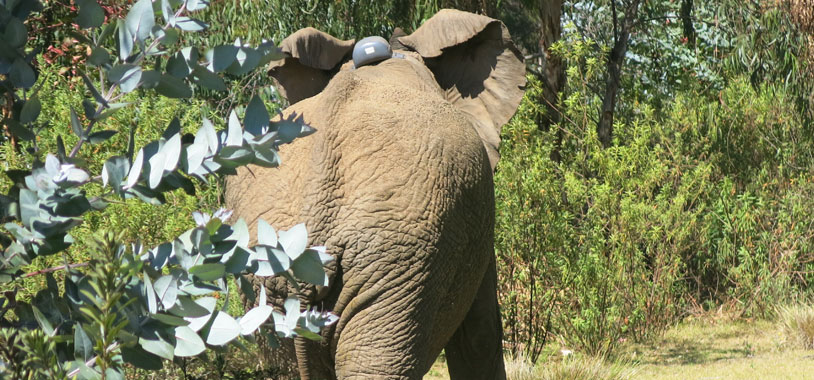In 2010/2011 ten collars were deployed in Mount Kenya at the height of the poaching crisis to see what was happening on the mountain. However, within half a year around three quarters of the collared elephants had been poached. This was when we knew that things were equally as bad, if not worse, as the poaching in the savannahs. One of the reasons that no one realised what was going on is the tactics for killing elephants in the mountains are completely different to those on the savannahs where they are simply shot. In the mountains torturous methods are used such as dropping sharp objects from above and using car tow rope snares.
In addition to monitoring the poaching in this area, the collars were used to monitor the frequency that the elephants used the newly constructed underpass. And it was seen from the collar data that after some time the elephants did learn to use it.
After losing around 90% of the collared elephants on the mountain, including Mountain Bull earlier this year, it was decided that we needed to start again and deploy some new collars in Mount Kenya.
We were informed that a collaring operation was scheduled to happen and after a week of planning the STE team, along with the Lewa team who had sent scouts to monitor what was happening along the corridor, left early on 18th Sept. The teams met in Lewa and drove to the edge of the forest, arriving there at around 7am. After a brief planning session the cars drove deeper into the forest to where some of the elephants had been sighted that morning, while the fixed-wing searched a wider area and relayed back information.
At around 9am a group of 3 bulls was found. They were all very young bulls and the teams picked the biggest one to dart. The 18 year old male went down and the teams rushed to the scene and fitted him with a collar.
In the meantime the fixed-wing was still out searching and had found another group, this time a breeding herd. They were located some way east of where the bull was collared and so it took the ground teams around ¾ hour to reach the place where the fixed-wing was circling. Once we got into position the chopper went up and the dart went in. Again this was another young elephant, around 15 years old. The female was lying for around 5 minutes before the cars got there and the calves and family were all calling. By the time we got there the vet checked and said we must act as quickly as possible as the female was only lightly asleep. After the collar was fitted and the elephant was revived we all left and returned back to the cars.
The next plan was to return to Kisima farm as this was where the next target was found. The planes waited and gave us time to drive for about 1 hour to where the elephant was. We then had to park the cars and proceed on foot, looking for where the plane was and talking to the plane the whole time.
The elephant, a 25 year old male, was in a difficult area as it was very steep; therefore the plane was trying its best to push him up and prevent him going down into the gully. Luckily they succeeded and kept him in a hilly area. The elephant went down on his chest and there was a dilemma as to whether to try to push him over or just fit the collar as he was. We went on to fit the collar under a lot of pressure to be as quick as possible. Luckily we were successful and revived him. There were some anxious moments as he struggled to get to his feet, but thankfully he was soon awake and walked away.
Besides using these collars to monitor the use of the corridor, it will also be interesting to watch and see what happens knowing how quickly we lost the first group of collared animals on Mount Kenya. One of the biggest challenges, which anyone who goes there can see, is that there are a large number of farms in this area stretching right into the forest. It is therefore so easy for the poachers to hide in these farms and continue their poaching while pretending to be doing farming.
Since it is a different way of killing which is very silent, and it is in a forest where it is difficult to detect carcasses, this situation needs all the stake holders to come together to think of a plan to save the Mount Kenya elephants. One way to do this would be to begin community sensitisationin the areas where elephants are found, as we know from our work in the lowlands that community outreach is very successful. STE is very keen to work closely with Lewa on these campaigns and we now need to initiate the planning process as soon as possible.


